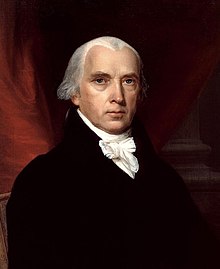Section 1: Federal courts

Section 1 is one of the three vesting clauses of the United States Constitution, which vests the judicial power of the United States in federal courts, requires a supreme court, allows inferior courts, requires good behavior tenure for judges, and prohibits decreasing the salaries of judges.
The judicial Power of the United States, shall be vested in one supreme Court, and in such inferior Courts as the Congress may from time to time ordain and establish. The Judges, both of the supreme and inferior Courts, shall hold their Offices during good Behaviour, and shall, at stated Times, receive for their Services a Compensation which shall not be diminished during their Continuance in Office.
Number of courtsedit
Article III authorizes one Supreme Court, but does not set the number of justices that must be appointed to it. Article I, Section 3, Clause 6 refers to a Chief Justice (who shall preside over the impeachment trial of the President of the United States). Since 1869 the number of justices has been fixed at nine (by the Judiciary Act of 1869): one chief justice, and eight associate justices.
Proposals have been made at various times for organizing the Supreme Court into separate panels; none garnered wide support, thus the constitutionality of such a division is unknown. However, in a 1937 letter (to Senator Burton Wheeler during the Judicial Procedures Reform Bill debate), Chief Justice Charles Evans Hughes wrote, "the Constitution does not appear to authorize two or more Supreme Courts functioning in effect as separate courts."
The Supreme Court is the only federal court that is explicitly established by the Constitution. During the Constitutional Convention, a proposal was made for the Supreme Court to be the only federal court, having both original jurisdiction and appellate jurisdiction. This proposal was rejected in favor of the provision that exists today. Under this provision, the Congress may create inferior (i.e., lower) courts under both Article III, Section 1, and Article I, Section 8. The Article III courts, which are also known as "constitutional courts", were first created by the Judiciary Act of 1789, and are the only courts with judicial power. Article I courts, which are also known as "legislative courts", consist of regulatory agencies, such as the United States Tax Court.
In certain types of cases, Article III courts may exercise appellate jurisdiction over Article I courts. In Murray's Lessee v. Hoboken Land & Improvement Co. (59 U.S. (18 How.) 272 (1856)), the Court held that "there are legal matters, involving public rights, which may be presented in such form that the judicial power is capable of acting on them," and which are susceptible to review by an Article III court. Later, in Ex parte Bakelite Corp. (279 U.S. 438 (1929)), the Court declared that Article I courts "may be created as special tribunals to examine and determine various matters, arising between the government and others, which from their nature do not require judicial determination and yet are susceptible of it." Other cases, such as bankruptcy cases, have been held not to involve judicial determination, and may therefore go before Article I courts. Similarly, several courts in the District of Columbia, which is under the exclusive jurisdiction of the Congress, are Article I courts rather than Article III courts. This article was expressly extended to the United States District Court for the District of Puerto Rico by the U.S. Congress through Federal Law 89-571, 80 Stat. 764, signed by President Lyndon B. Johnson in 1966. This transformed the article IV United States territorial court in Puerto Rico, created in 1900, to an Article III federal judicial district court.
The Judicial Procedures Reform Bill of 1937, frequently called the court-packing plan, was a legislative initiative to add more justices to the Supreme Court proposed by President Franklin D. Roosevelt shortly after his victory in the 1936 presidential election. Although the bill aimed generally to overhaul and modernize the entire federal court system, its central and most controversial provision would have granted the President power to appoint an additional justice to the Supreme Court for every incumbent justice over the age of 70, up to a maximum of six.
The Constitution is silent when it comes to judges of courts which have been abolished. The Judiciary Act of 1801 increased the number of courts to permit the Federalist President John Adams to appoint a number of Federalist judges before Thomas Jefferson took office. When Jefferson became President, the Congress abolished several of these courts and made no provision for the judges of those courts. The Judicial Code of 1911 abolished circuit riding and transferred the circuit courts authority and jurisdiction to the district courts.
Tenureedit
The Constitution provides that judges "shall hold their Offices during good Behaviour." The term "good behaviour" is interpreted to mean that judges may serve for the remainder of their lives, although they may resign or retire voluntarily. A judge may also be removed by impeachment and conviction by congressional vote (hence the term good behaviour); this has occurred fourteen times. Three other judges, Mark W. Delahay, George W. English, and Samuel B. Kent, chose to resign rather than go through the impeachment process.
Salariesedit
The compensation of judges may not be decreased, but may be increased, during their continuance in office.
Comments
Post a Comment